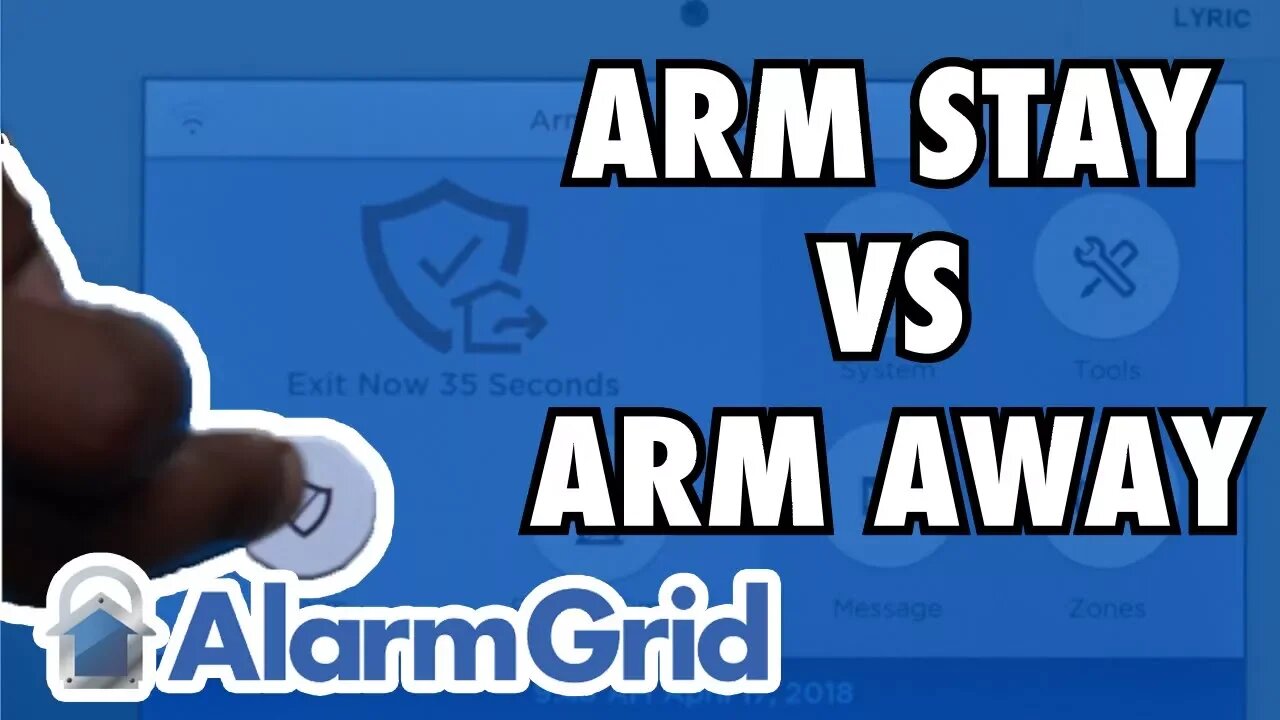Premium Only Content

Arm Stay vs Arm Away
In this video, Bryce discusses the differences between arm stay and arm away on an alarm system. These are both arming functions that can send the security system into an alarm when a programmed sensor is activated. Some sensors will only trigger an alarm when the security system is set to arm away.
For the sake of simplicity, a user will only need to think about three different states that their alarm system can be placed in. These are disarmed, armed stay and armed away. A system in a disarmed state will usually only trigger an alarm if a sensor with a very specific response type is activated. For example, a disarmed system will usually only activate an alarm if a life-safety sensor, such as a smoke detector, is activated, or if a panic button is pressed. A disarmed system can also cause an alarm if a 24-hour sensor is activated. This could be an emergency door or window that would never be opened otherwise.
However, when the system is armed, that means that certain sensors wouldn't normally be activated. The only way that these sensors would activate while the system is armed is if there is some type of break-in. Armed stay means that a user is on-site, but they do not anticipate anyone entering or exiting the property. When the system is set to armed stay, a user can activate interior sensors, such as indoor motions, and not have to worry about setting off an alarm. But if a perimeter sensor or an entry/exit sensor is activated by someone trying to break-in, then an alarm will occur on the system.
Meanwhile, a system set to arm away means that nobody is on-site and that interior sensors should not be activated. A system will trigger an alarm if a perimeter sensor is activated or if an interior sensor is activated. However, if an entry/exit sensor is activated, then an alarm will not immediately occur. Instead, the system will need to be disarmed within the system's programmed entry delay period before an alarm will occur.
Additionally, if the system is set to arm away, and an entry/exit sensor is first activated before an interior sensor is activated, then an alarm will not immediately occur. This way, a user can activate an entry/exit sensor and walk past a motion sensor to get to the keypad to disarm the system. However, the system will still need to be disarmed within the entry delay period, or else an alarm will still occur.
-
 3:39
3:39
Alarm Grid Home Security DIY Videos
2 years agoQolsys IQ Panel 4: Using Dual Path Monitoring
22 -
 UPCOMING
UPCOMING
Game On!
17 hours agoNFL Week 11 Early DEEP DIVE And BEST BETS!
1762 -
 LIVE
LIVE
Crypto Power Hour
12 hours agoIn The Blockchain World,, What Is TOKEN MINTING
5,580 watching -
 17:23
17:23
T-SPLY
11 hours agoThousands Of ICE Watch Kits Passed Out In Chicago!
2165 -
 25:09
25:09
Jasmin Laine
16 hours agoReporter CATCHES Carney Red-Handed—Liberal MP SNAPS in Public MELTDOWN
1.25K28 -
 9:05
9:05
Adam Does Movies
15 hours agoIT: Welcome To Derry Episode 3 - Recap
260 -
 14:43
14:43
Producer Michael
17 hours agoBILLION DOLLAR GOLD MOGUL'S PRIVATE WATCH COLLECTION
108 -
 38:44
38:44
State of the Second Podcast
17 hours agoThe Mini Gun Brand Everyone’s Talking About (ft. Goat Guns)
801 -
 9:59
9:59
TheSaltyCracker
14 hours agoBerkeley Communists Rob & Attack Man Outside TPUSA Event
59.1K166 -
 36:09
36:09
ZeeeMedia
14 hours agoFauci-Era Animal Experiments Continue, Texas New Push for Digital ID | Daily Pulse Ep 141
16K14